A Complete ActiveX Web Control Tutorial
Posted 人最大的荣耀不在于从未失败,而在于每次失败以后都能东山再起
tags:
篇首语:本文由小常识网(cha138.com)小编为大家整理,主要介绍了A Complete ActiveX Web Control Tutorial相关的知识,希望对你有一定的参考价值。
A Complete ActiveX Web Control Tutorial
From: https://www.codeproject.com/Articles/14533/A-Complete-ActiveX-Web-Control-Tutorial

Introduction
ActiveX is a Microsoft technology developed in the mid 90\'s, that allows for the creation of applet-like applications that can be downloaded and run within Microsoft\'s Web browser. This article is intended for Visual C++ developers who are trying to learn how to develop their first ActiveX control for a web application but finding it difficult. While trying to learn this technology myself, I found much of the information available on ActiveX was either no longer available, out of date, or missing critical information, making it extremely difficult for me to create an ActiveX control necessary for my development project. This article is intended to help you get up to speed quickly with developing an ActiveX control. It will show you the basic concepts you need to know about ActiveX, such as methods, properties, and events, and how to communicate between an ActiveX control and a web page. You will learn how to implement the control for use with default security settings in Internet Explorer on Windows XP, without getting unsigned or unsafe control warning messages.
For this tutorial, we will create an ActiveX control that displays a progress bar animated GIF when the control is loaded as a way to indicate to users that the control is loading and processing information. The control will contain functionality to demonstrate how to pass information between the control and the web page. You will be guided step by step on creating the control using Microsoft Visual Studio 2005.
Creating an ActiveX Control
To create an ActiveX control, use Microsoft Visual Studio 2005 to perform the following steps:
- From File menu, select New, then Project.
- In the New Project dialog, as shown in Figure 1, under Project types, select Visual C++, MFC. Under Templates, select MFC ActiveX Control.
- Name the project MyActiveX; for Location, enter the working folder for the project\'s source code, and then click the OK button.
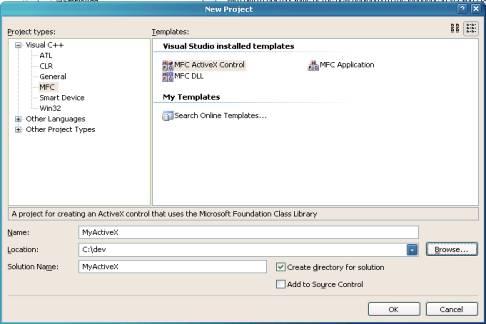
Figure 1. New Project Dialog
- In the MFC ActiveX Control Wizard dialog, as shown in Figure 2, select Control Settings.
- Under Create control based on, select STATIC. We are using a static control, as we are just displaying the output from the control and not accepting input.
- Under Additional features, make sure Activates when visible and Flicker-free activation are checked and Has an About box dialog is not checked.
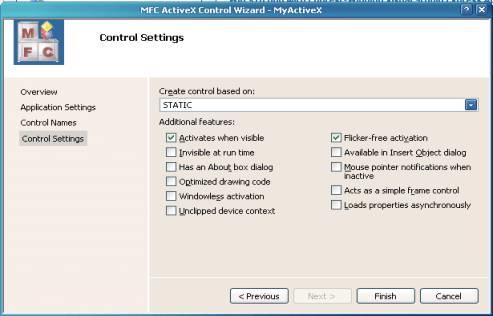
Figure 2. MFC ActiveX Control Wizard Dialog
- Click the Finish button to enable the MFC ActiveX Control Wizard to create the project\'s source code. By default, the wizard creates the project to use MFC in a shared DLL. We need to change this since the ActiveX control will not run unless the required MFC DLLs are already installed on the system where the control is being downloaded and run. This is one of the causes of a red X displayed where an ActiveX control should be on a web page. From the Visual Studio menu, select Project, Properties. Navigate to Configuration Properties, General. Change the entry "Use of MFC" to "Use MFC in a Static Library".
- The wizard has created the following three classes:
- CMyActiveXApp – This is the ActiveX application class derived from COleControlModule. It is the base class to derive an OLE control module object that contains the member functions for initialization (InitInstance) and code cleanup (ExitInstance).
- CMyActiveXCtrl – This is derived from the base class COleControl. This is where we will implement most of the functionality for our control.
- CMyActiveXPropPage – This is derived from the base class COlePropertyPage. It is used to manage the property page dialog for the control. The ActiveX Control Wizard has created a default dialog to serve as a property page for the control.
Adding Support for Animated GIF
In order to implement support for displaying a progress bar animated GIF from the ActiveX control, we will use the CPictureEx class presented by Oleg Bykov in a CodeProject article. Refer to the References section for more details. First, add the source files pictureex.cpp and pictureex.h to your project, by selecting the Solution Explorer tab in VS 2005, then right click on the Header Files or Source Files in the source tree, and then Add, Existing Item to select the appropriate source file.
To add an animated GIF resource to the project, we have to work around a defect in Visual Studio 2005 (and VS 2003) that does not allow importing a GIF image file. If you try it, you will get an error reporting that the file is not a valid GIF file. You can work around this defect as follows:
- Copy the GIF file ProcessingProgressBar.gif to your project working folder, and rename the file to ProcessingProgressBar.gaf with a "gaf" file extension. In Resource View, right click on the resource file MyActiveX.rc, and select Add Resource. In the Add Resource dialog, press the Import button, and select the file ProcessingProgressBar.gaf. In the Custom Resource Type dialog, enter "GIF" for Resource type, and press OK. This will import the GIF image file into the project. You will find it listed under GIF in Resources. Navigate to this item, and change the control ID from the default of IDR_GIF1 to IDR_PROGRESSBAR.
- Now, we need to make things right with the image file. First, save the resource file MyActiveX.rc. Navigate to the project working folder, and edit this same resource file with Notepad. Navigate to the line item definition for IDR_PROGRESSBAR, and change the filename in quotes to "ProcessingProgressBar.gif". Also, change the GIF image filename in the working folder to "ProcessingProgressBar.gif". From Notepad, save the resource file MyActiveX.rc. Visual Studio will then report that the file myactivex.rc has been modified outside of Visual Studio, click Yes to reload the file. One more correction needs to be made. Select Solution Explorer, navigate to the item "ProcessingProgressBar.gaf", and select it. In Properties, select Relative Path, and correct the filename to "ProcessingProgressBar.gif".
Adding Dialog for Progress Bar Graphic
Now, we will add a dialog for the progress bar graphic.
- In Resource View, right click on the dialog item in the tree, and select Insert Dialog to create a default dialog.
- Delete the OK and Cancel buttons that are not needed, and adjust the size of the dialog to 230 x 40.
- Change some of the default properties of the dialog to: Border – None, Style – Child, System Menu – False, Visible – True.
- Change the control ID to IDD_MAINDIALOG.
- Insert a picture control into the dialog, by selecting the Toolbox tab on the right of Visual Studio, selecting a picture control, and clicking in the dialog. Adjust the size of the control to 200 x 20. Change the control ID to IDC_PROGRESSBAR and the Color property to White.
- Create a class for the dialog, by right clicking on the dialog and selecting Add Class. This results in the MFC Class Wizard dialog as shown in Figure 3. Name the class CMainDialog, with the base class CDialog. Click Finish for the wizard to create the default source files for the class.
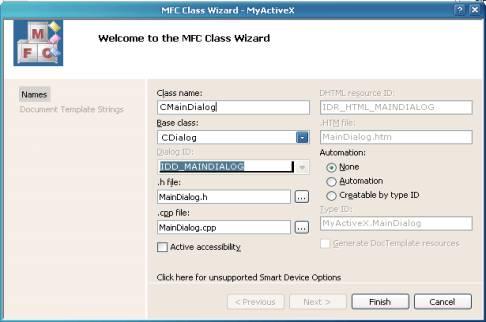
Figure 3. MFC Class Wizard – CMainDialog
Now, we add the member variables for the classes. The member variable m_MainDialog is associated with the CMainDialog class, and m_ProgressBar is associated with the progress bar control we added to the main dialog.
- Add the member variable m_MainDialog to the class CMyActiveXCtrl. Select Class View, right click on CMyActiveXCtrl, and select Add, Add Variable. Enter CMainDialog for Variable type and m_MainDialog for Variable name, and then press the Finish button.
- Similar to the above, add a member variable m_ProgressBar to the class CMainDialog. Enter CPictureEx for Variable type, m_ProgressBar for Variable name, and enable the Control variable checkbox, and make sure IDC_PROGRESSBAR is entered for Control ID. Before clicking on the Finish button, make sure that Variable type is set to CPictureEx and not changed to CStatic.
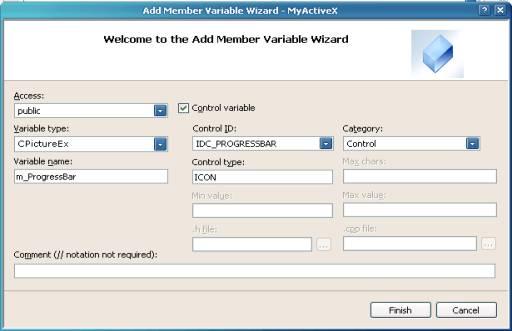
Figure 4. Add Member Variable Wizard – m_ProgressBar
Adding Support Code
Now, we get our hands dirty with adding some code to support drawing the main dialog and the progress bar control.
- Select the class CMyActiveXCtrl. In the Properties sheet, select the Messages icon, then WM_CREATE. Select the listbox to the right of WM_CREATE, then <Add> OnCreate to add a method for the WM_CREATEmessage. The wizard will add the OnCreate method to the CMyActiveXCtrl class.
- Edit MyActiveXCtrl.cpp, and add the following code to the OnCreate method to create the main dialog:
Hide Copy Code
m_MainDialog.Create(IDD_MAINDIALOG, this);Add the following code to the OnDraw method to size the main dialog window and fill the background:
Hide Copy Code
m_MainDialog.MoveWindow(rcBounds, TRUE);CBrush brBackGnd(TranslateColor(AmbientBackColor()));pdc->FillRect(rcBounds, &brBackGnd); - Select the class CMainDialog. In the Properties sheet, select the Messages icon, then WM_CREATE. Select the listbox to the right of WM_CREATE, then <Add> OnCreate to add a method for the WM_CREATEmessage. The wizard will add the OnCreate method to the CMainDialog class.
- Edit MainDialog.cpp, and add the following code to the OnCreate method to load and draw the progress bar animated GIF image:
Hide Copy Code
if (m_ProgressBar.Load(MAKEINTRESOURCE(IDR_PROGRESSBAR),_T("GIF")))m_ProgressBar.Draw();Make sure the build configuration is set to the Release configuration, and build the MyActiveX ActiveX application.
Creating a Web Page for an ActiveX Control
The tool of choice for quickly creating a default web page to test your control is Microsoft\'s ActiveX Control Pad. It is available for download from Microsoft.
You will also find it available for download at various other sites on the Internet. Install it and run it on the same system you are using to develop the control with Microsoft Visual Studio. To make it easier for initial testing of the application, you should make sure that the Microsoft IIS web server is installed on this same system.
When you first run the ActiveX Control Pad, it will create a default html web page for you. To insert an ActiveX control, right click within the <BODY> tag of the HTML source, and select Insert ActiveX Control. In the Insert ActiveX Control dialog, scroll down and select MyActiveX Control that you have created with Visual Studio, and click OK.
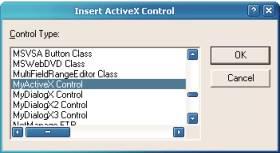
Figure 5. ActiveX Control Pad – Insert ActiveX Control
Two dialog boxes will be displayed in the ActiveX Control Pad, enabling you to modify the control. The Properties dialog is for modifying properties of the control, the Edit ActiveX Control dialog is for manually editing the control. You can close both of these dialogs as we can make any further changes necessary by manually editing the HTML code. You should now find an OBJECT ID tag inserted in the HTML code, similar to that shown in Figure 6. Change the size parameters of the control by changing to "WIDTH=350" and "HEIGHT=50" in the OBJECT IDtag. Save the HTML file for the web page to the file myactivex.htm in the root folder wwwroot of IIS web server.

Figure 6. ActiveX Control Pad – MyActiveX ActiveX Control
To test the ActiveX control, load the web page http://localhost/myactivex.htm with Internet Explorer. If you get any warning messages, just click OK to proceed. This should result in a progress bar animated GIF displayed within the web page. If not, or if you get a red X displayed where the ActiveX control should be, then it is most likely due to the security settings of the browser which is preventing the ActiveX control from loading and running. To correct this, modify the security settings in Internet Explorer to change all the settings that have to do with ActiveX to enabled.
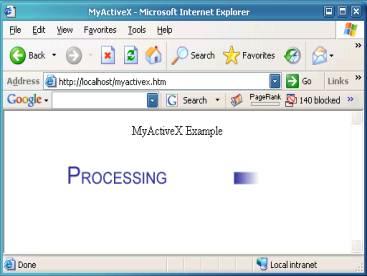
Figure 7. MyActiveX Control in Internet Explorer
Next, we need to build the ActiveX control so loading it from Internet Explorer browser does not result in annoying error messages complaining that it is an unsigned or unsafe control.
Building a Signed ActiveX Control
To create a signed ActiveX control, you must purchase a Code Signing Certificate from one of the certificate providers such as Thawte, Verisign, or GeoTrust. With this service, they will verify your identity and provide you certificate files you use to sign the ActiveX application. I chose Thawte for a Code Signing Certificate, who provided two files for signing the application, mycert.spc and mykey.pvk.
To sign the ActiveX application, we package the components of the application into a CAB file, which is downloaded from the web site and the ActiveX control is installed on the system. Part of installing the ActiveX control requires registering the control. To enable that to happen, the control must be built with the OLESelfRegister value defined in the VERSIONINFO structure of the ActiveX control. Versions of Microsoft Visual Studio up to VS 2003 inserted this entry, but Visual Studio 2005 does not. To add the entry, edit the resource file myactivex.rc to add the OLESelfRegister value, as shown below:
Hide Shrink
 Copy Code
Copy Code
VS_VERSION_INFO VERSIONINFOFILEVERSION 1,0,0,1PRODUCTVERSION 1,0,0,1FILEFLAGSMASK 0x3fL#ifdef _DEBUGFILEFLAGS 0x1L#elseFILEFLAGS 0x0L#endifFILEOS 0x4LFILETYPE 0x2LFILESUBTYPE 0x0LBEGINBLOCK "StringFileInfo"BEGINBLOCK "040904e4"BEGINVALUE "CompanyName", "TODO: <Company name>"VALUE "FileDescription", "TODO: <File description>"VALUE "FileVersion", "1.0.0.1"VALUE "InternalName", "MyActiveX.ocx"VALUE "LegalCopyright","TODO: (c) <Company name>. All rights reserved."VALUE "OLESelfRegister", "\\0"VALUE "OriginalFilename", "MyActiveX.ocx"VALUE "ProductName", "TODO: <Product name>"VALUE "ProductVersion", "1.0.0.1"ENDENDBLOCK "VarFileInfo"BEGINVALUE "Translation", 0x409, 1252ENDENDBefore signing the application, the ActiveX control should be packaged into a CAB file. This CAB file will also contain an INF file that is used for installing your ActiveX control. To build a CAB file, you need the cabarc.exe tool available in the Microsoft Cabinet Software Development Kit. The following is an example of a simple INF file that can be used for packaging the MyActiveX control into a CAB file. For the CLSID line item, you should change the value to the same value as that in the OBJECT ID tag in the HTML web page you created earlier with the ActiveX Control Pad.
Hide Copy Code
[Add.Code]myactivex.ocx=myactivex.ocxmyactivex.inf=myactivex.inf[myactivex.ocx]file=thiscabclsid={36299202-09EF-4ABF-ADB9-47C599DBE778}RegisterServer=yesFileVersion=1,0,0,0[myactivex.inf]file=thiscabTo create a CAB file, run cabarc as shown below. Important: Make sure the OCX and INF files are in same directory where you are running cabarc.exe, otherwise the CAB will not be extracted correctly after downloading from the web server. This is one of the problems that will cause a red X on the web page where the ActiveX control should be.
Hide Copy Code
cabarc -s 6144 N myactivex.cab myactivex.ocx myactivex.infTo sign the CAB file you created, you need the signcode.exe tool from Microsoft MSDN. Refer to the "Signing and Checking with Authenticode" reference at the end of this article. You use the signcode tool with the certificate files you obtained from purchasing a Coding Signing Certificate to sign the CAB file. The following is an example use of signcode to sign myactivex.cab:
Hide Copy Code
signcode -n "myactivex" -ihttp://www.myactivex.com -spc mycert.spc -v mykey.pvk -t<A href="http://timestamp.verisign.com/scripts/timstamp.dll%20myactivex.cab" target=_blank>http://timestamp.verisign.com/scripts/timstamp.dll myactivex.cab</A>In the above example, http://www.myactivex.com should be replaced with a web page that provides users further information about your signed ActiveX control.
To use the signed CAB file in your web page, first copy the myactivex.cab to a folder on your web site, then you must modify the OBJECT ID tag on your web page with a CODEBASE parameter to reference this CAB file. Refer to Figure 8 for an example. If you load this page in Internet Explorer, it should download the CAB file and install your ActiveX control with no warning about an unsigned ActiveX control.

Figure 8. ActiveX Control Pad – MyActiveX with CODEBASE
Building a Safe ActiveX Control
To make a control that will load in Internet Explorer with no unsafe control warning or error messages, you must implement code that ensures safe initialization and safe scripting for an ActiveX control. Detailed information for doing that can be found in the article "Safe Initialization and Scripting for ActiveX Controls" on Microsoft MSDN. Refer to References at the end of this article for details. I found omissions and mistakes in this article that I have corrected for presentation in this article. Basically, all that needs to be done is to add code to the DllRegisterServer and DllUnregisterServer methods. The following is a step-by-step guide for making your ActiveX control safe:
- Edit MyActiveX.cpp and add the following code. The value of CLSID_SafeItem should be taken from IMPLEMENT_OLECREATE_EX in the MyActiveXCtrl.cpp source file or the equivalent for your ActiveX control. It will also be the same value as the CLSID in the OBJECT ID tag on the HTML page with your ActiveX control.
Hide Shrink
 Copy Code
Copy Code
#include "comcat.h"#include "strsafe.h"#include "objsafe.h"// CLSID_SafeItem - Necessary for safe ActiveX control// Id taken from IMPLEMENT_OLECREATE_EX function in xxxCtrl.cppconst CATID CLSID_SafeItem ={ 0x36299202, 0x9ef, 0x4abf,{ 0xad, 0xb9, 0x47, 0xc5, 0x99, 0xdb, 0xe7, 0x78}};// HRESULT CreateComponentCategory - Used to register ActiveX control as safeHRESULT CreateComponentCategory(CATID catid, WCHAR *catDescription){ICatRegister *pcr = NULL ;HRESULT hr = S_OK ;hr = CoCreateInstance(CLSID_StdComponentCategoriesMgr,NULL, CLSCTX_INPROC_SERVER, IID_ICatRegister, (void**)&pcr);if (FAILED(hr))return hr;// Make sure the HKCR\\Component Categories\\{..catid...}// key is registered.CATEGORYINFO catinfo;catinfo.catid = catid;catinfo.lcid = 0x0409 ; 以上是关于A Complete ActiveX Web Control Tutorial的主要内容,如果未能解决你的问题,请参考以下文章